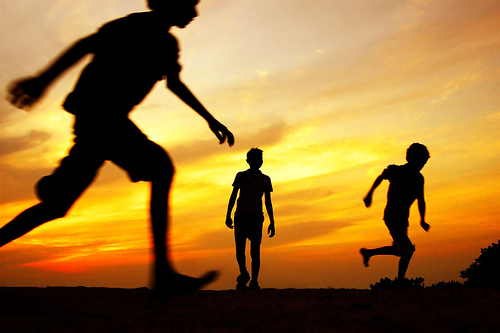
Running is one of the most popular sports in the world because of its simplicity. Lace up a pair of shoes (and even that’s not necessary) and you can run out your front door for a great workout. You don’t need equipment, a pool, a field, or gear. Now that’s minimalist running; it’s one of the reasons why I love this sport so much. The only thing I bring with me is my RoadID for safety.
Today, all this is changing as runners buy more gear that promises to make them faster, more resistant to injury, and stronger. Minimalist running, or embracing the purity of the sport and sticking to basics, has taken a back seat to Garmin GPS systems, heart-rate monitors, fuel belts, and exotic recovery powders.
Instead of a running shoe that helps us run with better form, we rely on motion-control shoes with Impact Guidance Systems, Space Trusstic Systems, and DuoMax Support Systems. Why are there so many “systems” in one shoe? Studies have even shown that expensive shoes – somebody has to pay for all of these systems! – are more likely to cause injury than cheap running shoes.
Many new runners train exclusively on the treadmill so they can control pace, distance, terrain, and elevation. Outside, these factors can’t be controlled so the outdoor world is avoided. When I started running as a freshman in high school, my coach told me to go run in the woods strictly by feel. What happened to exploring the outdoors and the new gift of running?
Our reliance on technology is replacing our reliance on listening to our bodies. We don’t run what’s comfortable for us on that particular day – we run what C25k (Couch to 5k) tells us to run, despite how we feel. Instead of practicing good running form with a pair of minimalist running shoes, we let our $129.99 pair of Brooks Beast motion control shoes “correct” our form.
Minimalist Running
I want this to change. I want runners to stop spending time calibrating their GPS gadgets, leave the fuel belt and iPod at home today (that stuff is heavy), remember to run easy when you’re supposed to, and get off the treadmill and into the woods. Let’s start a revolution.
The human body is not a machine and can’t be calibrated to a specific pace or distance every day, no matter how hard you try. It’s important to remember this. Just because your Runner’s World 10k training plan (that’s the same template for everyone) says you should run 7 miles today doesn’t mean you should. Maybe you feel great and should run 8 miles! Or maybe cut that run to an easy 5 and focus on general strength. Either way, keep in mind that schedules have their limits and to always let your body guide you.
I have run with music in the past, probably 5-7 times in my 12 years of running. It does not compare to the symphony of footsteps, breathing, birds, wind, and running water that you will experience on a forest trail. Finding the perfect song and making sure the earplugs stayed in was too stressful for me. It detracted from the innate pleasure of a good run.
The six months that I owned a heart rate monitor were increasingly neurotic – I started wearing it on easy runs in addition to tempo workouts. I even wore it to bed to determine my lowest possible heart rate. I’m done having a piece of technology dictate my training.
I know some runners who do most of their runs on an outdoor track! Talk about boring. Ditch your high-tech gadgets and the same routes in your neighborhood (after all, variety is a hallmark of a good training program). Get off the treadmill. Need inspiration to run the outdoors without your Garmin? Check out the videos and images at MovNat.
The fastest runners I know don’t own GPS watches or run on treadmills. They run outside and don’t wear motion-control shoes. None of them wear iPods, use a generic training plan from Active, or do their distance runs on a track.
I cringe when I hear what some runners bring with them for a training run: credit card, license, keys, fuel belt (with three different types of carbohydrate drinks), iPod with arm strap, and a heart-rate monitor. Where does it all go?
When I run, I have my watch and a RoadID bracelet for safety. No keys, no fancy technology, and no music. Even for longer runs of 2+ hours, I don’t carry any extra gear. Simplicity!
Let’s get back to basics and embrace minimalist running. Ditch the gadgets that you just don’t need. Who’s with me?
Recommended Reading:
- The Simple Guide to a Minimalist Life
- The Barefoot Running Book: A Practical Guide to the Art and Science of Barefoot and Minimalist Shoe Running
- Barefoot Running
